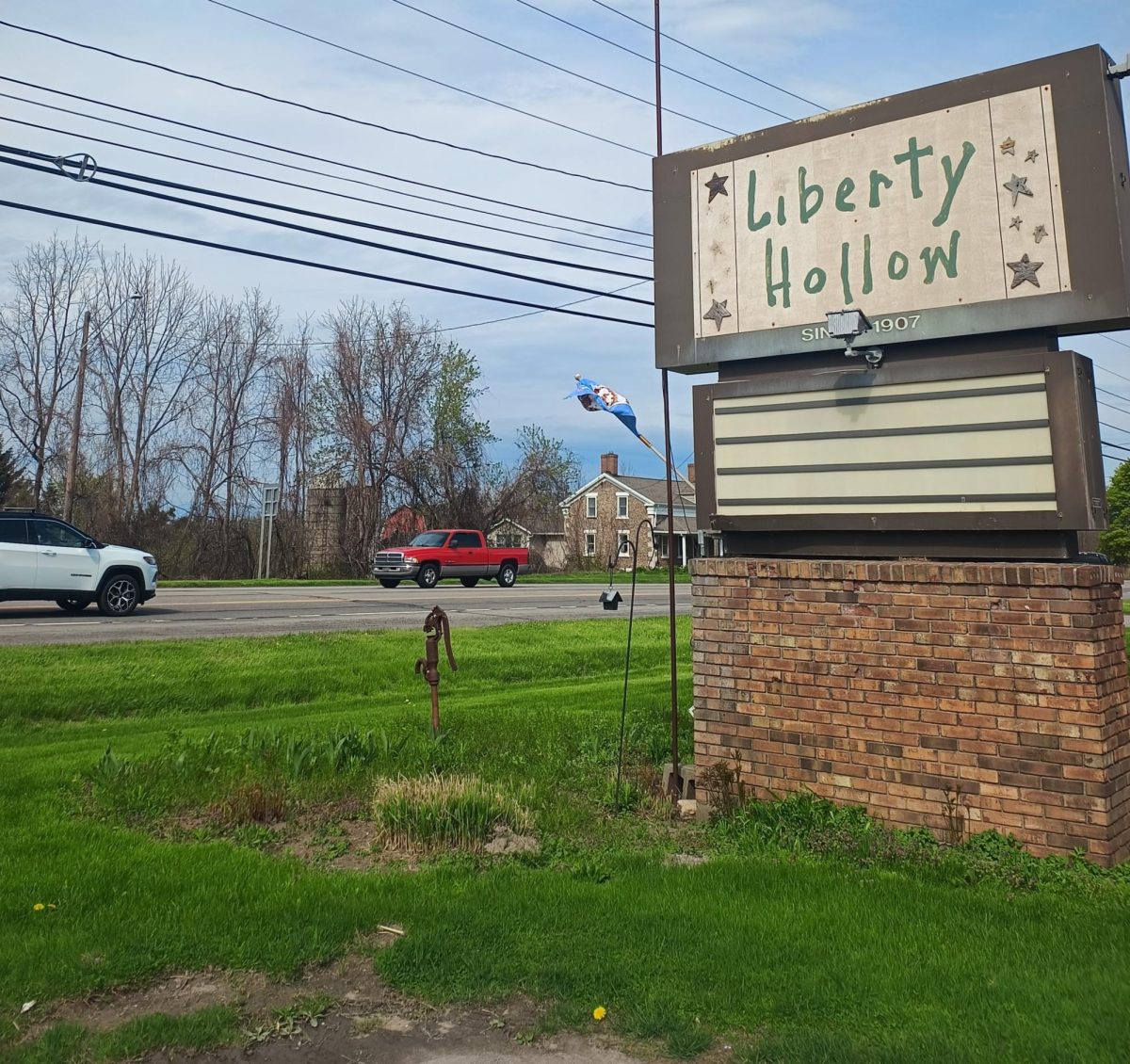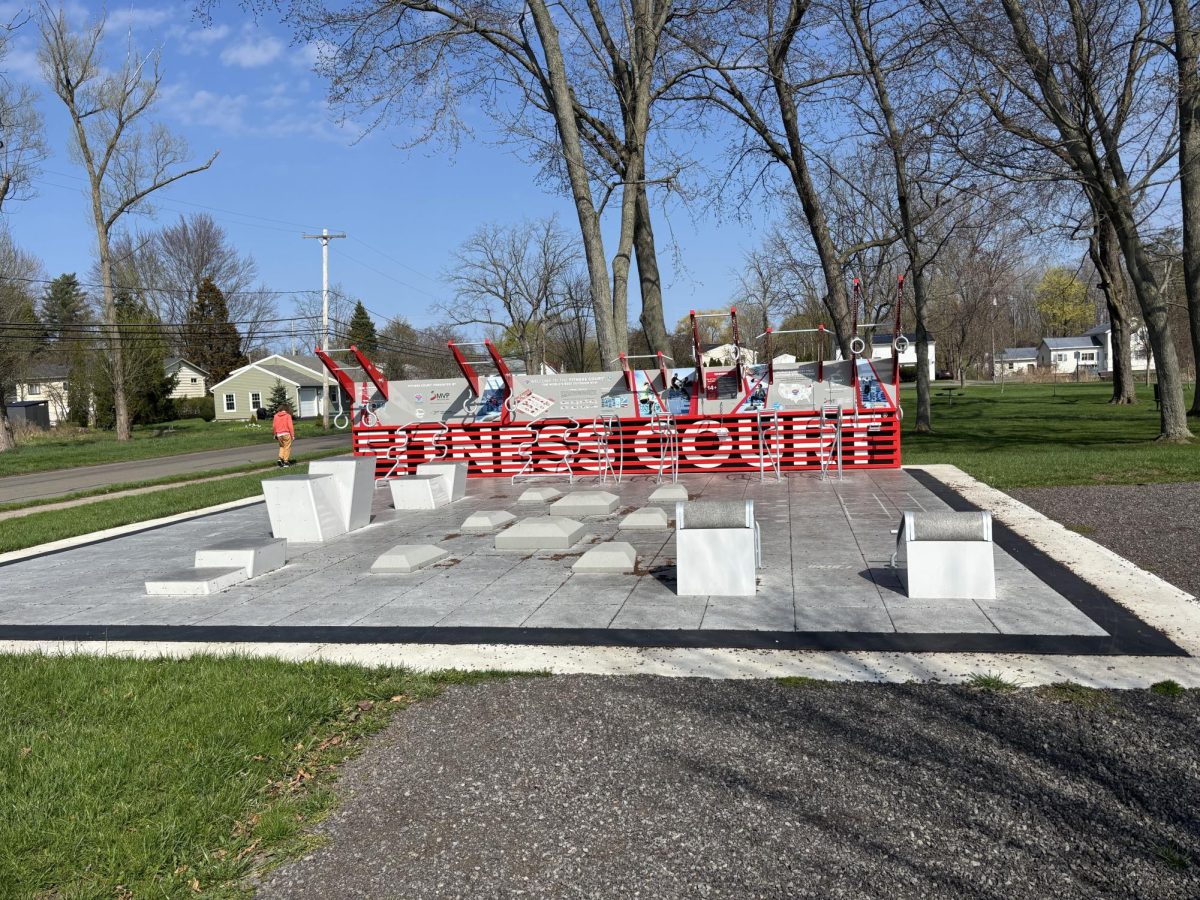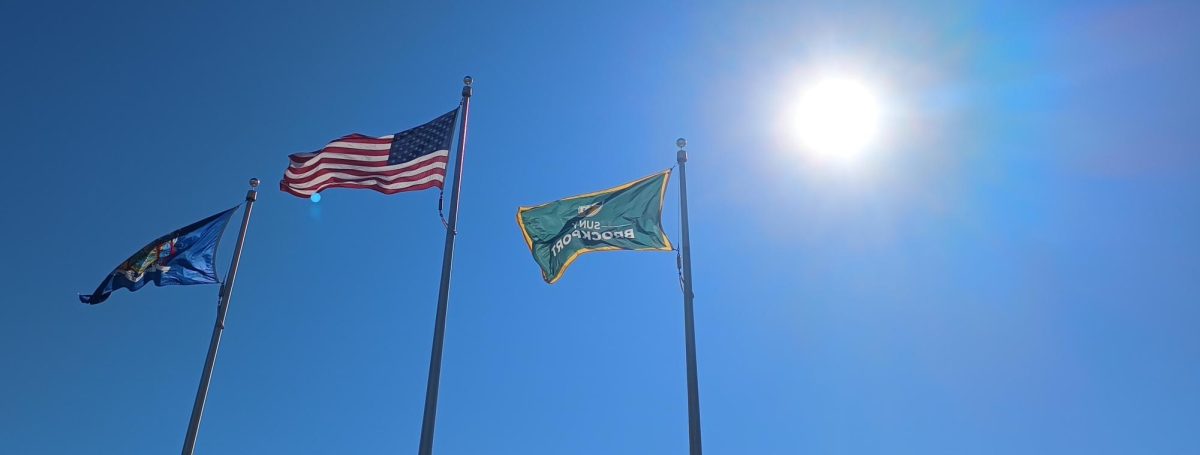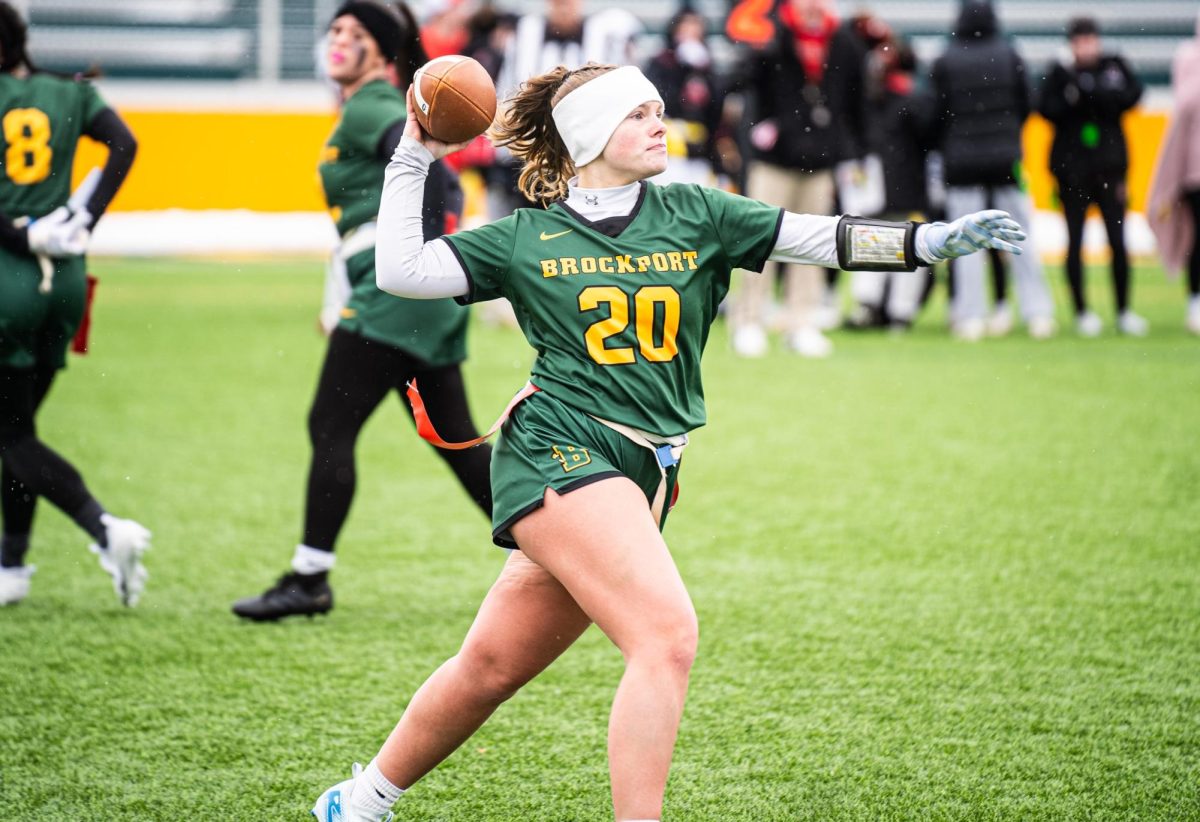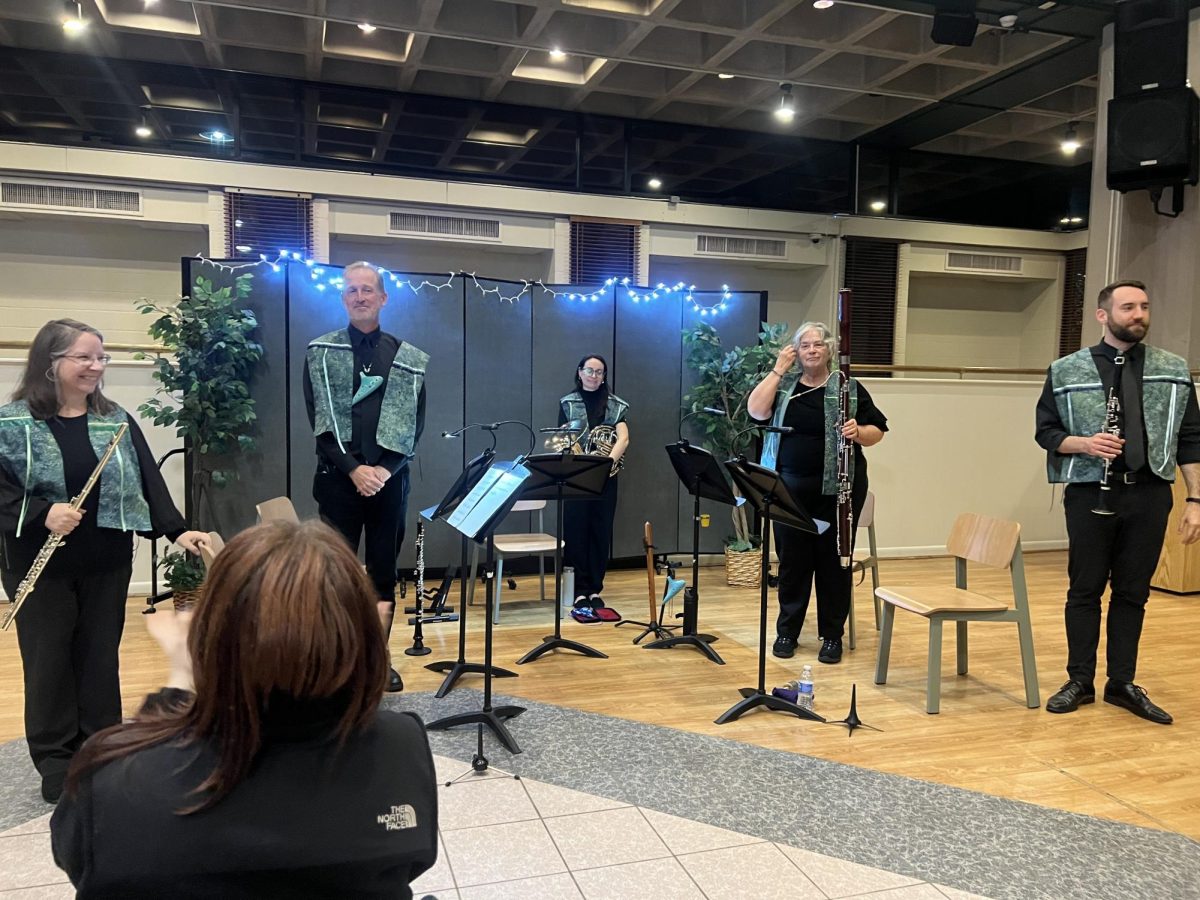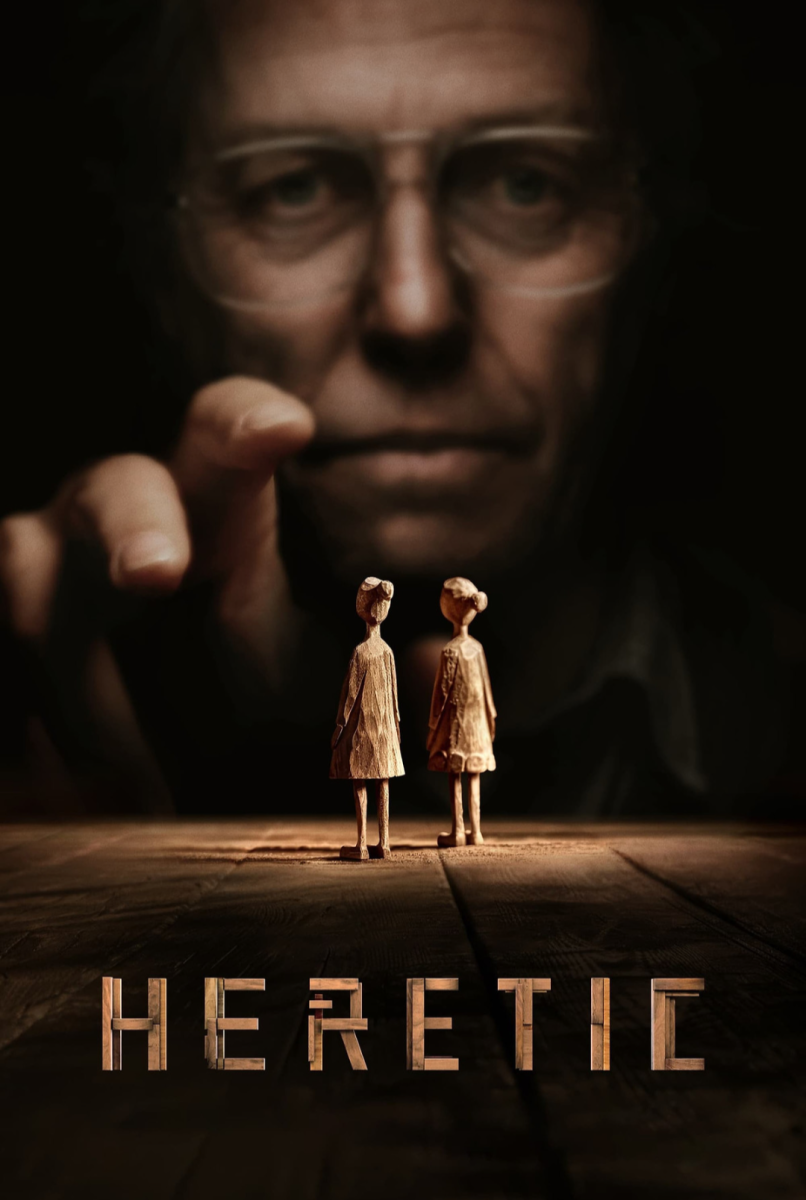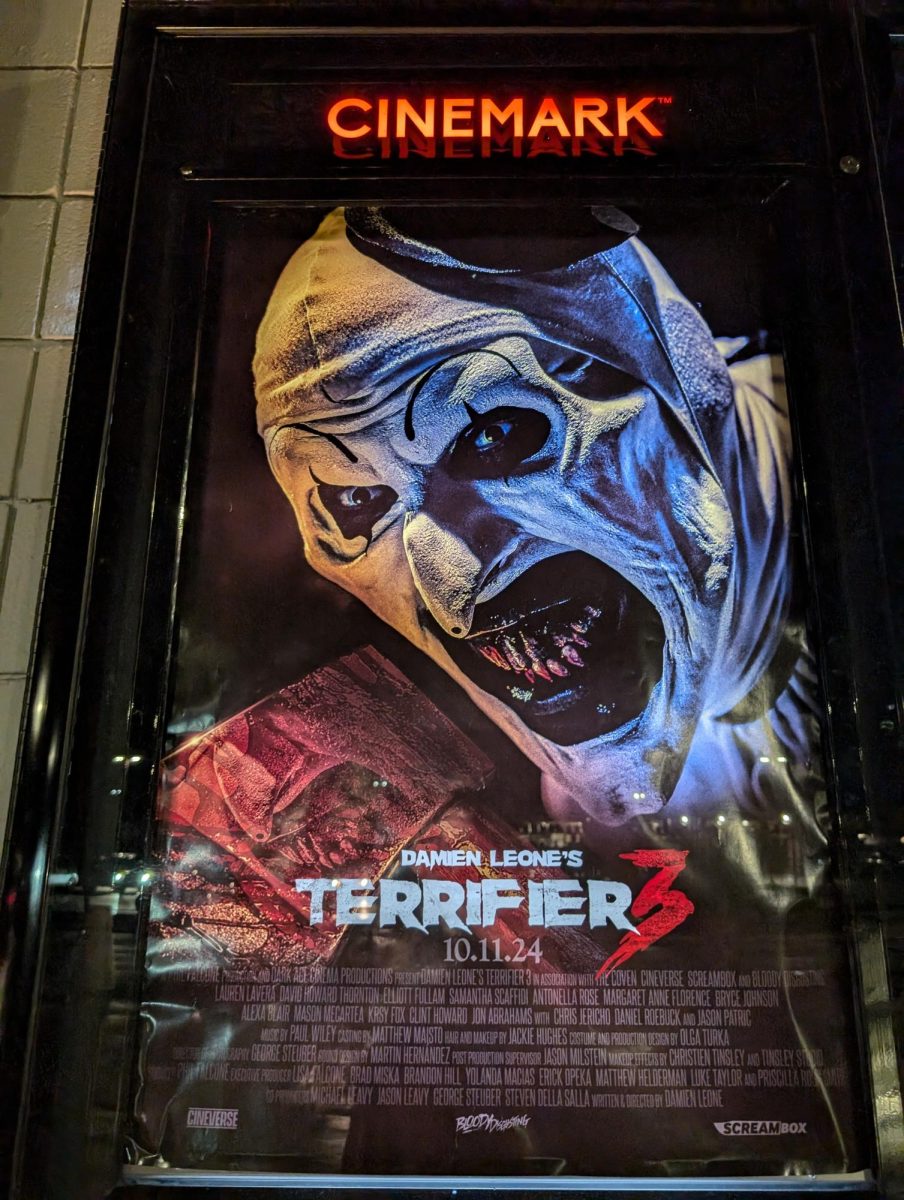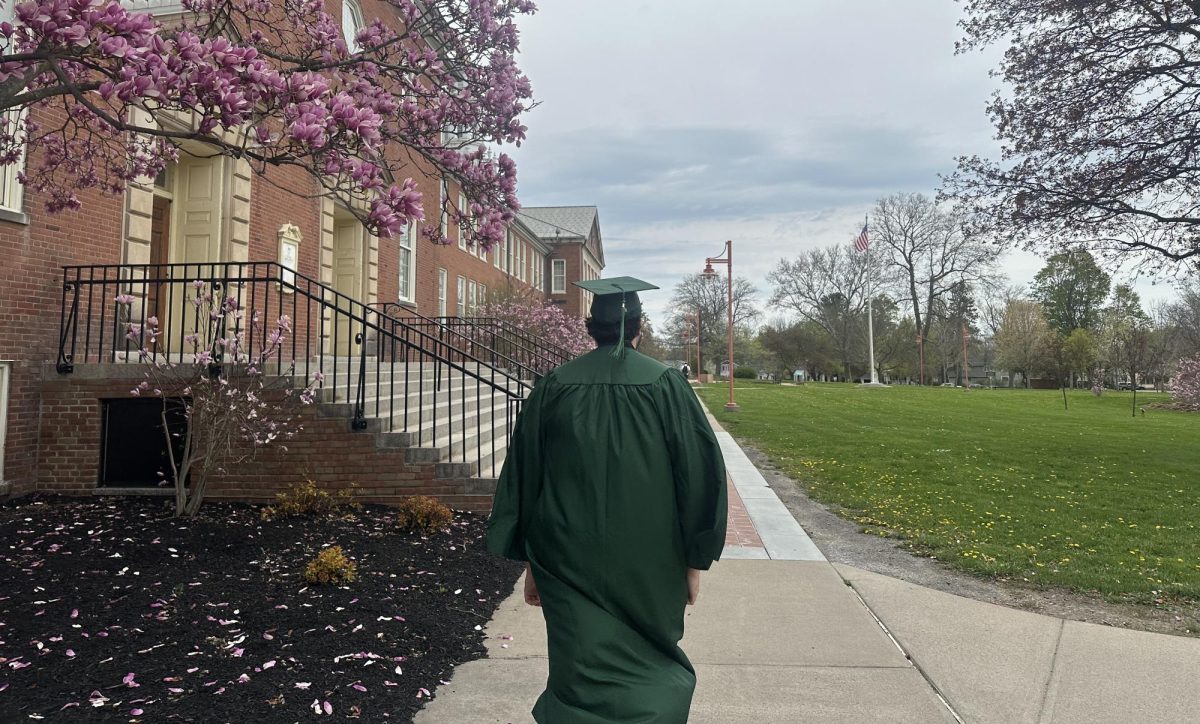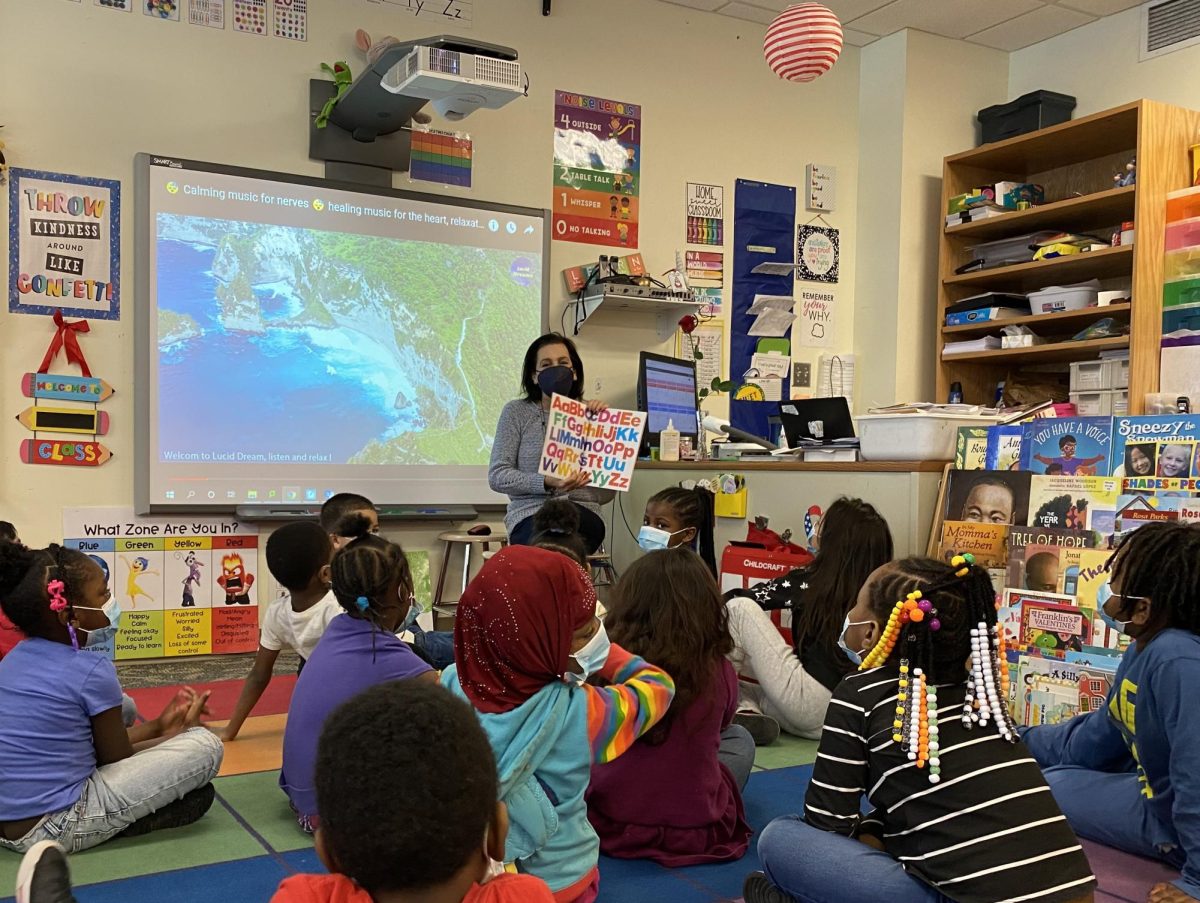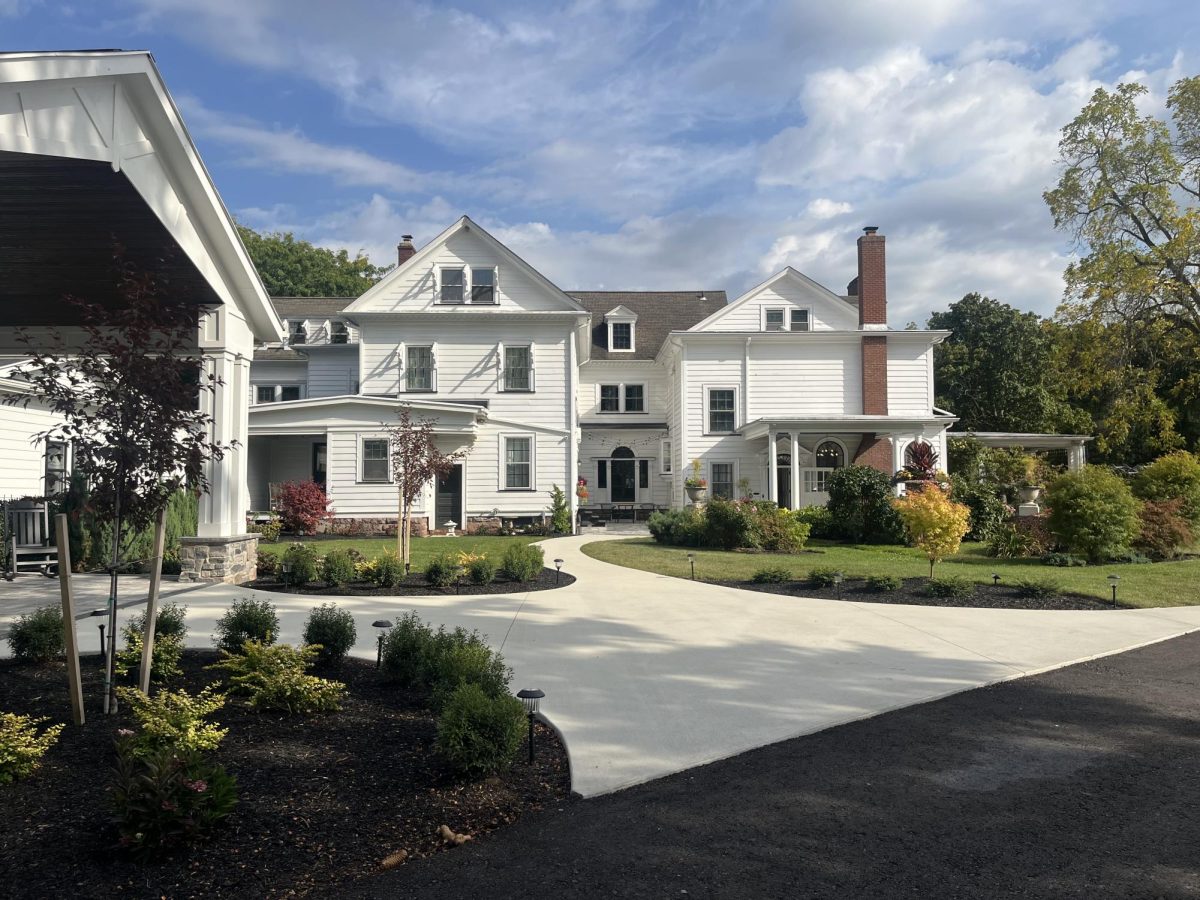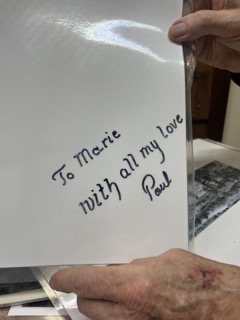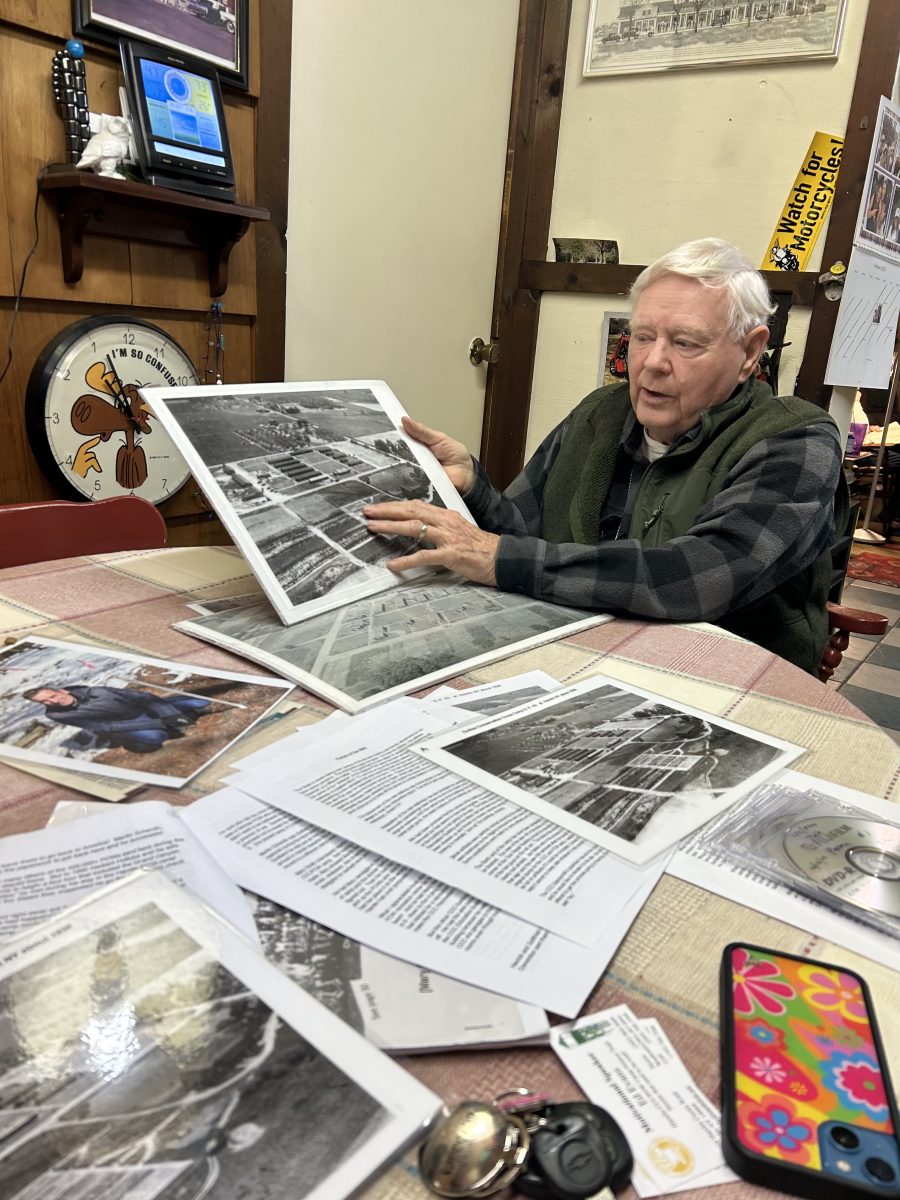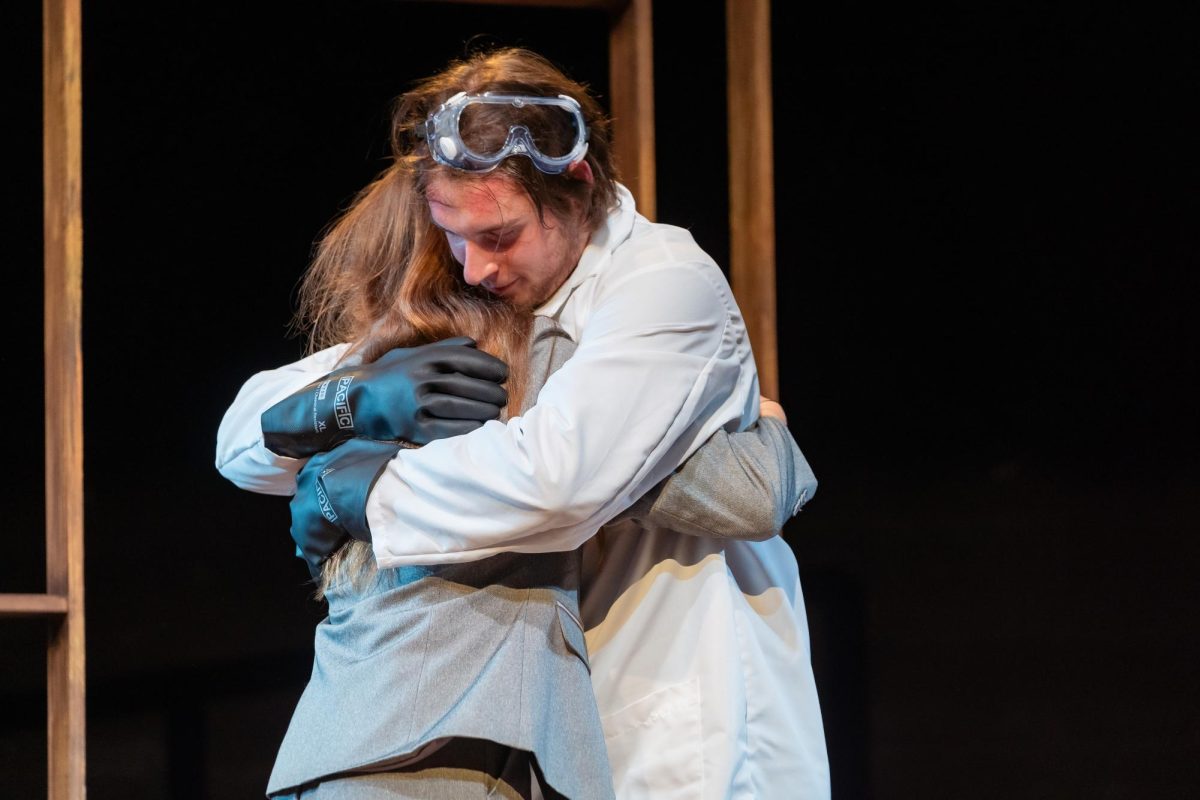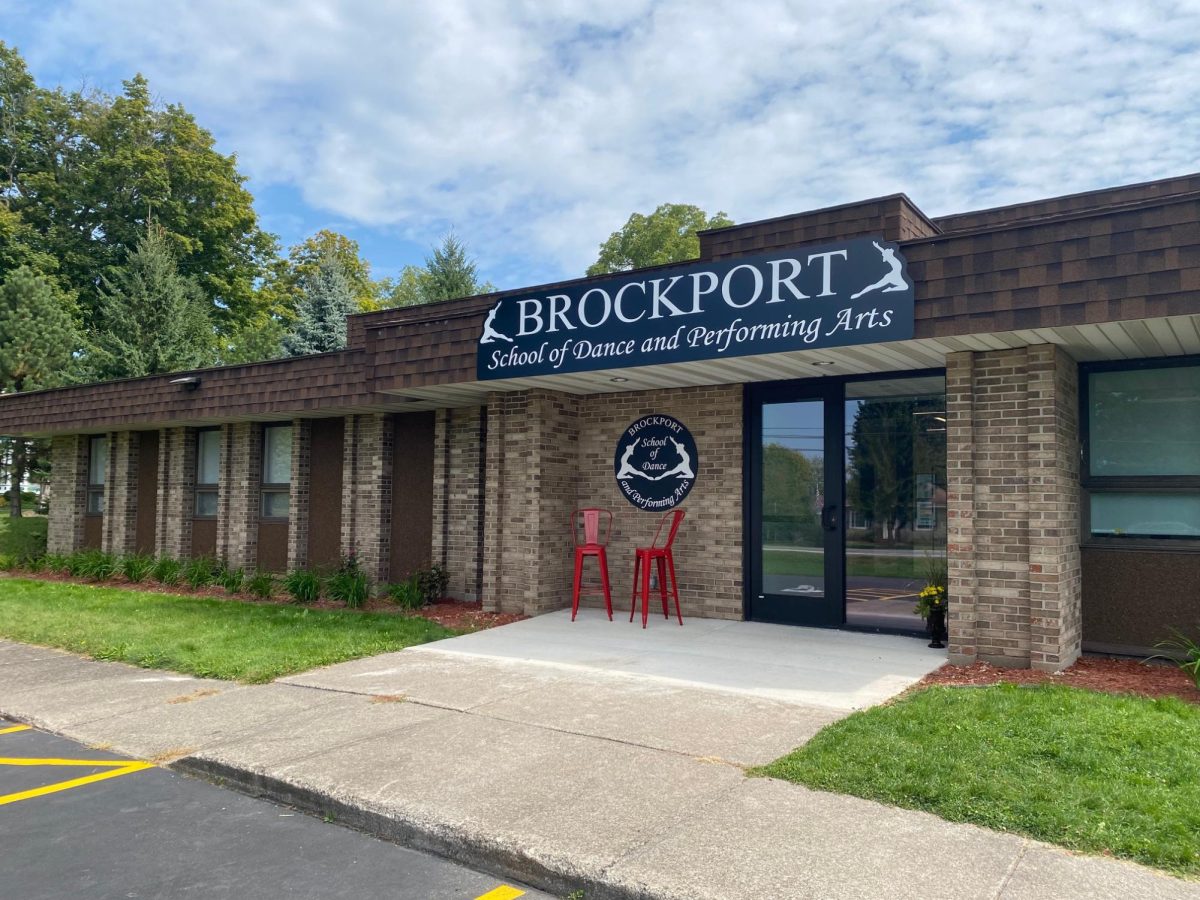BROCKPORT, N.Y. – The euphonic melodies of the E-Yah-Pah-Hah Wind Quintet filled the Gallery of SUNY Brockport’s Seymour College Union on Thursday, Nov 7.
The quintet performs classical music created by Native American composers, bridging Western music and Native American music. “E-Yah-Pah-Hah” translates to “town crier,” as the quintet brings both Native-influenced music and information about Native culture to attendees of their performances.
The E-Yah-Pah-Hah Wind Quintet was founded by Kae Wilbert. The former Churchville-Chili district music teacher created this group to connect the Western music she was familiar with to her Cherokee heritage. She developed this interest after she heard Native classical composer Louis Ballard’s “Maid of the Mist” performed at a Nazareth College dance concert. After receiving his contact information, she commissioned Ballard to write a piece for her sixth-grade band.
“I wanted the kids to experience a real Native person writing music for their instruments, and that was wonderful,” Wilbert said.
This interest in combining Western and Native music came during a period of self-discovery for Wilbert. She spent the most time learning about her Cherokee heritage as an adult. It was hard for her mother to pass down her Cherokee heritage to Wilbert when she was growing up.
“She didn’t think of it as something to teach me, because it was her. So when I got to be about 40, I said, ‘Oh, my God, I’ve got to learn this stuff,’ Wilbert said. “And I thought I’d read one book and learn, I’d be satisfied. I’ve now read about 150 books and made multiple trips to Oklahoma. Everything that I learned just fit like a glove.”
This quintet consists of Wilbert on bassoon, Scott Horsington on clarinet, Maggie Warren on horn, Darren Pulley on oboe and Susan Walders on flute. While Wilbert is the only Native member of the quintet, the other members are musicians who want to perform this fusion of Native and classical music.
“I’m thrilled that these players want to do this,” Wilbert said. “You know, they come to rehearsals, they come prepared, they’re eager and they’re interested.”
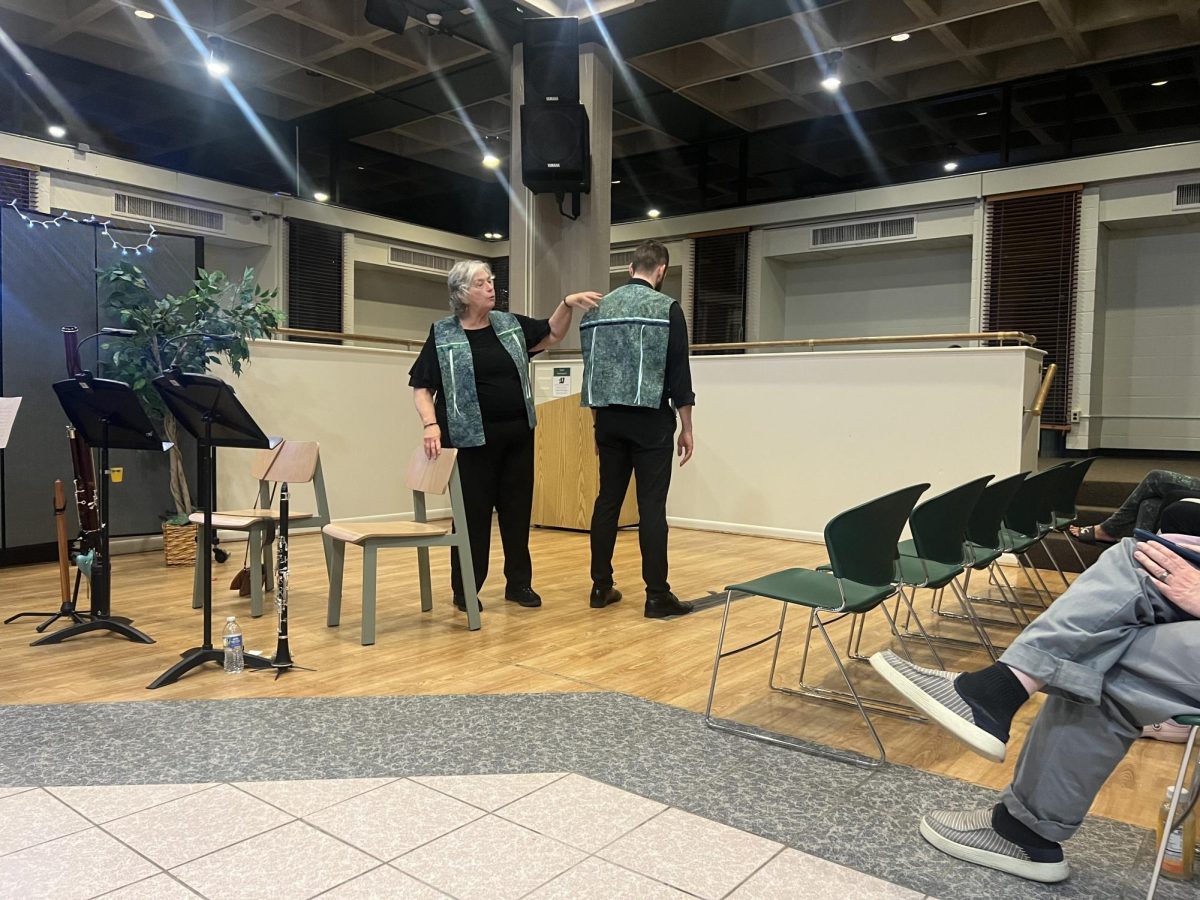
While classical music seems like it would clash with traditional Native music, the two genres paired nicely to create an immersive listening experience for concertgoers. Coordinator of Music Studies for SUNY Brockport’s Department of Theatre and Music Studies and ethnomusicologist Natalie Sarrazin explained how the composition and instrumentation of the pieces came together to portray the experiences of Native Americans.
“It’s an ethos of nature, and using sounds from nature, rather than, okay, we’re going to put in this kind of chant or this kind of drum,” Sarrazin said. “There was no percussion, except that one rattle. It was more like a feeling, or just perceptions about Native American life. It seemed to be more esoteric.”
It was more than just a concert – before each performance, Horsington and Wilbert talked to the audience about the quintet itself, the various instruments used and other important cultural aspects of the performances. Vice president of Friends of Ganondagan Carl Hatch-Feir also spoke about Native culture during the concert. This included information about the ribbon vests each quintet member wore.
“It’s a fairly traditional garment worn primarily by men, but not exclusively,” Hatch-Feir said. “They are generally handmade, frequently by the wearer, but for those of us who are sewing impaired – this one I had made for me specifically.”
The E-Yah-Pah-Hah Wind Quintet performed three pieces: “Ritmo Indio” by Ballard, “Medicine Shields” by Dawn Avery and “Postcards From Native America” by Charles Shadle.
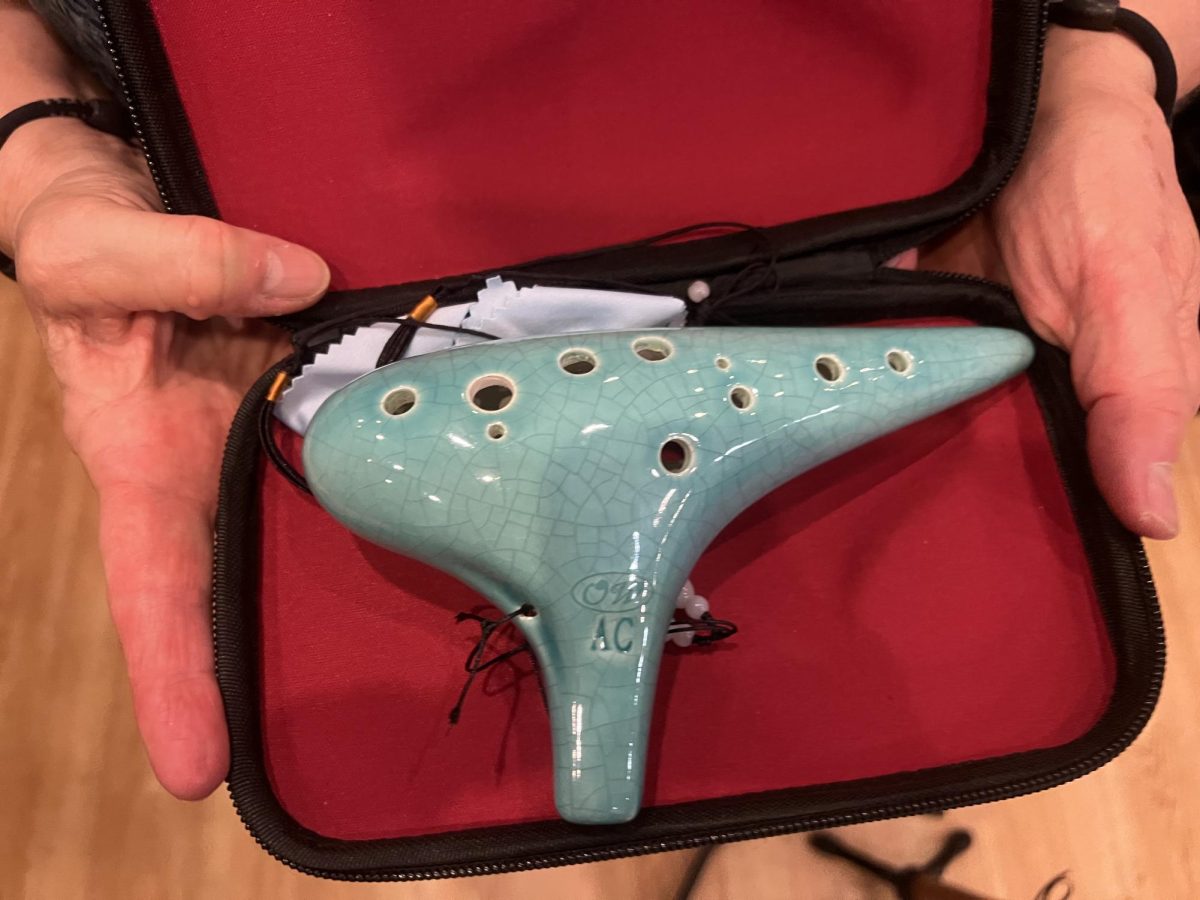
“Ritmo Indio” was divided into three movements: The Source, The Soul and The Dance. It was intricate and polyphonic, as each member of the quintet performed a separate melody.
“Medicine Shields” featured unique instruments, like the ocarina, rattle and Native flute. It was a more melodic piece, differing from “Ritmo Indio” and its use of contrasting sounds.
“Postcards From Native America” was written specifically for the E-Yah-Pah-Hah Wind Quintet. It contains five movements: Tishomingo, Wewoka, Okmulgee, Tuskahoma and Tahlequah. The movements are named after the five cities that are home to the five tribes native to Oklahoma: Cherokee, Chickasaw, Chocktaw, Creek and Seminole.
During this piece, Hatch-Feir read a small introduction about each movement to educate concertgoers on the five tribes and their respective cities. Like Wilbert, Hatch-Feir is also Native. He is a member of the historic site’s board of trustees to help educate others about and preserve Native culture in Western New York.
“10 years ago, there was a survey done of high school graduates, and the majority of them thought we were extinct,” Hatch-Feir said. “It’s important to know that we’re not still the warped, sort-of-history picture of who indigenous people are.”
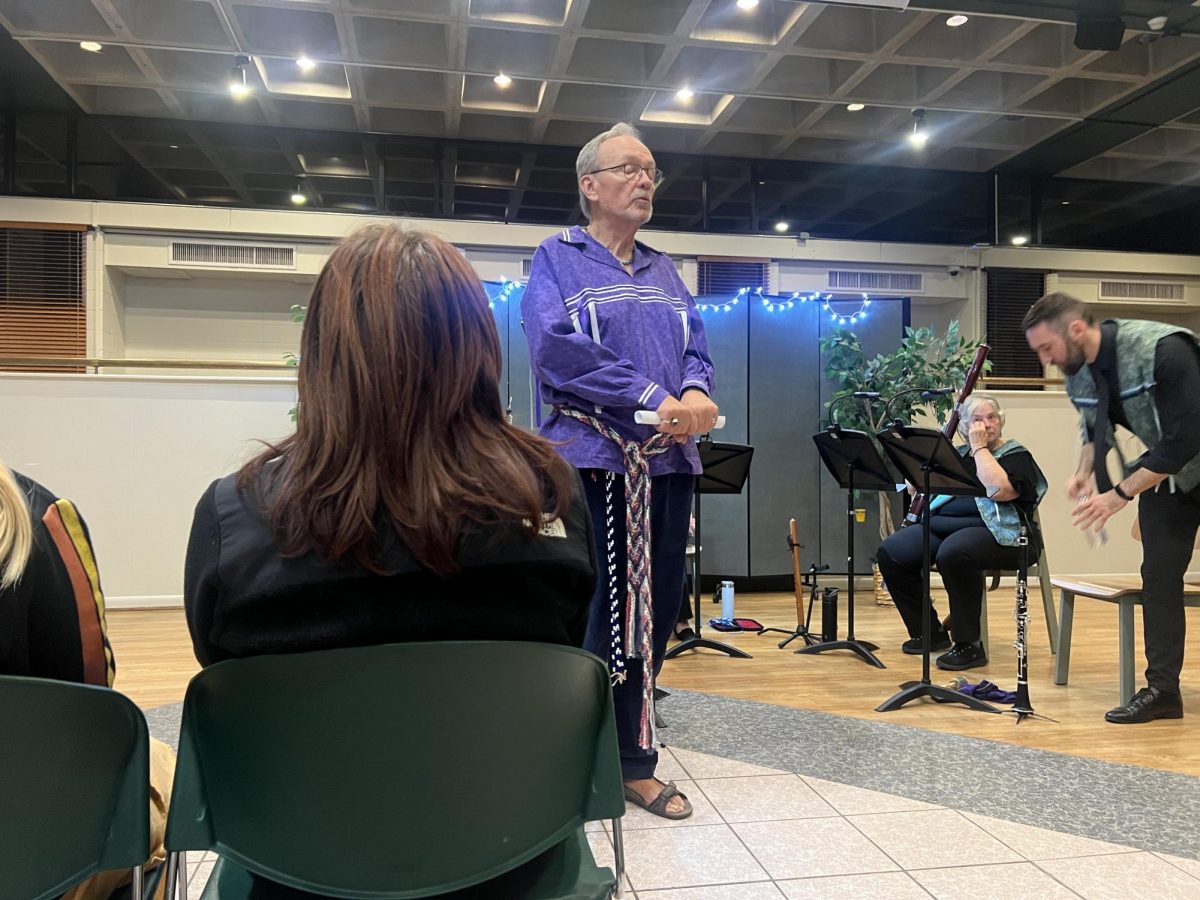
The Ganondagan State Historic Site, located in Victor, holds events year-round to inform people about Native culture. This includes an art contest, a music and arts festival, a summer camp and a winter games event.
“There’s a museum there with lots of artifacts and history, but it also is very much committed to reminding ourselves and reminding the world that our cultures are still alive, growing, evolving and changing, and so that’s a lot of what the activities that we’re involved in are about,” Hatch-Feir said.
The concert was well attended, giving the E-Yah-Pah-Hah Wind Quintet a platform to bring awareness to Native culture in Western New York.
“Students seem to really enjoy it. They were just mesmerized,” Sarrazin said. “Sometimes kids leave concerts – nobody left, everyone was there. I really like that they brought in [Carl Hatch-Feir from] Ganondagan. It really added this nice layer to it.”
This concert is part of SUNY Brockport’s observation of Native American Heritage Month and the Department of Theatre and Music Studies’ 2024-2025 Music Studies Concert Series.


